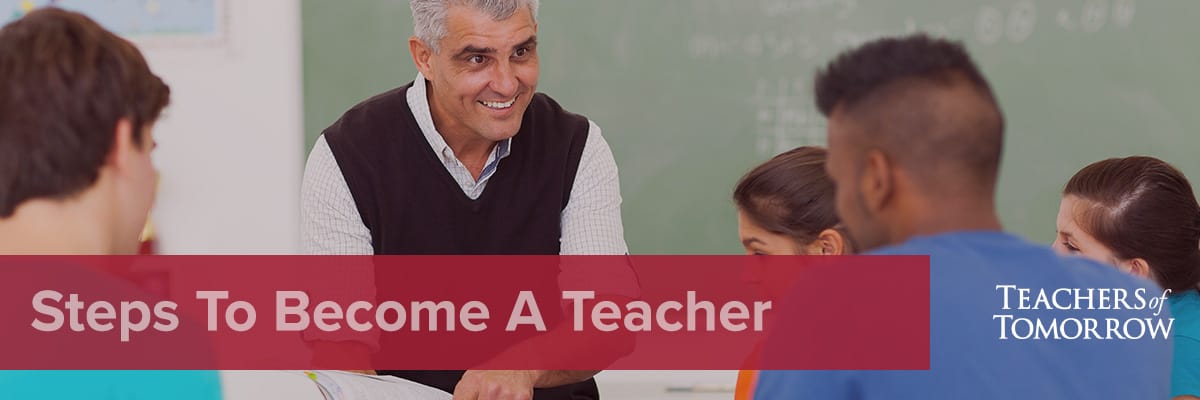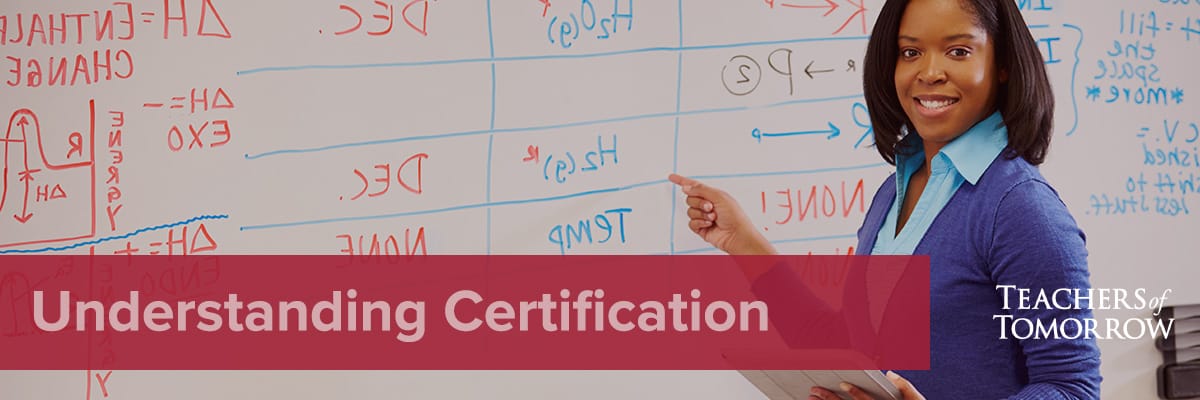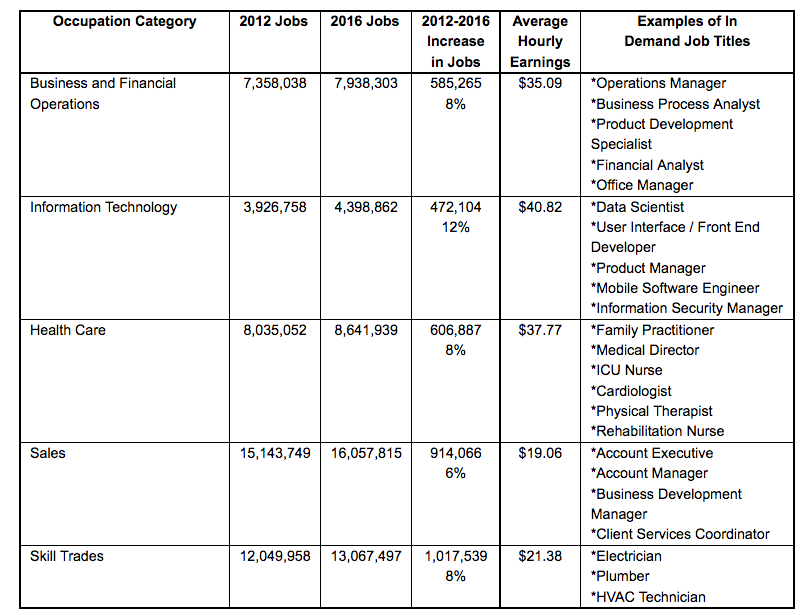Which angles are equal? Why?
Need answers? scarl@passionineducation.com
By James Schmidt
K-State Research and Extension
With all of the technology used for entertainment in today’s society, it can prove troublesome getting your child up from the couch and out onto the playground. But the trouble is worth it. Studies continually show physically active children outshine their peers in the classroom.
The classroom is just the beginning of the benefits of a physically active child, according to Bradford Wiles, assistant professor in Kansas State University’s School of Family Studies and Human Services, who said physical activity helps build connections between the body and brain.
“Kids who are physically active are much better at getting along with peers and adults,” Wiles said. “They also do better on standardized tests; the impact of physical activity cannot be underestimated.”
Wiles, an early child development specialist for K-State Research and Extension, said that in fact, physical activity could positively affect both the cognitive and emotional development of children.
“Physical activity as a pursuit doesn’t necessarily need to be in a team environment, but it often is,” Wiles said. “So they’re learning cognitive development skills, how to work with one another and how to handle winning and losing.”
It’s important to realize that the cognitive and emotional development children experience by participating in physical activity can’t happen if they are playing alone, he added. Being involved as a parent is essential for developing a well-rounded child.
“Physical activity with an adult, preferably a parent, is so much more beneficial not only for the child, but for the parent as well,” Wiles said. “We have an obesity issue with young children and adults. It doesn’t matter what you choose to do to be physically active; what matters is that you’re doing it consistently.”
Consistently kicking the soccer ball around or playing catch will not only improve the physical abilities of both the parent and the child, but this also works to improve the relationship between the two, he said. Being flexible and open to opportunities to new and unique kinds of physical activity is also important. There are multiple ways to perform any type of activity, and adults need to remember to be patient.
“While we may think the right way to play soccer is to kick the ball back and forth to one another, if a child decides they want to kick the ball all around the yard and then finally kick it to you, that’s ok,” Wiles said.
At times, it can be a struggle to get children physically active. One of the best ways to get a child out and about is to model it, the specialist advises. If a child sees his or her parent being physically active, that child is much more likely to follow suit.
What is not advisable, said Wiles, is using video games as a reward for being physically active.
“You’re teaching them that being sedentary is a reward,” he said, adding that a better approach would be to make being active just part of their everyday schedule.
Kids should be moving, no matter how young they are. For kids younger than age 3, Wiles advises that they should be active for half of the time that they’re awake. Whether that be crawling or walking—whatever they are capable of—it’s important for their cognitive development that they be active early in life.
“There’s a time to sit and relax, but that time is not early or middle childhood,” Wiles said. “That’s where we grow; play and physical activity are the work of early childhood.
“As kids get into elementary school, the recommendation is physical activity for an hour a day,” he continued. “I would echo that. I think even more importantly, physical activity with an adult is much more beneficial.”
Physical activity is even beneficial in keeping consistent sleeping schedules. Wiles said kids are much more ready for bed, when it’s bedtime, if they’ve been outside playing.
Wiles recommends looking toward the Centers for Disease Control and Prevention, the National Association for the Education of Young Children, the U.S. Department of Agriculture and your local Extension office for more information on the benefits of physical activity for children.
Teaching is one of the most fun and noble careers one could have. They have the power to influence and touch students’ lives profoundly.

In this guide you’ll learn why teachers are more important than ever and how to start your teaching career.
In the United States, the demand for teachers is skyrocketing. For instance, in California alone, teacher vacancies currently clocks at over 14,000 positions. According to reports, the figures are set to grow in the forthcoming school years. Considering this, experts see a noticeable increase, with 19% in the post-secondary department and 17% for preschool.
With more job openings in specific subject areas, there is no question that the country needs better teachers. Teachers with specialization in particular subject areas such as ESL, STEM, and special education needs are in high demand. Wondering where to practice your teaching career? See teacher shortage statistics for top five states below.
Teaching delivers multiple virtuous benefits, but shortage remains an adamant issue in both public and private educational facilities. To date, statistics report critical levels of teacher shortage in the following states:
The US offers staggering number of job opportunities for teachers. As a matter of fact, multiple locations show immense attractiveness rating, a data that’s evaluated based on a number of key factors such as compensation, working conditions, qualifications, and turnover. According to the Learning Policy Institute, these are the top 5 states that offer the most advantages for potential educators.
5 = Highest, 1 = Least
Teacher shortage area or TSA is defined as an area of specific grade, subject matter or discipline classification, or a geographic area in which the Secretary determines that there is an inadequate supply of elementary or secondary school teachers.
The length of time to become a full-fledge educator varies depending on your preference and area of focus. However, there are common rules that apply to all, such as getting a Bachelor of Arts or a Bachelor of Science degree beforehand. Through the years, teacher education requirements have changed dramatically in each individual state. While no two states have equal requirements, these are common routes you can choose from when considering a career in teaching.
Earned through college or university, completion of this degree usually takes four years of regular schooling. School needs to be accredited by National Council for Accreditation of Teacher Education.
An increasing number of states approve Alternative Certification programs to certify new teacher candidates that already have a Bachelor’s Degree in a subject other than education. Alt-Cert education programs like Teachers of Tomorrow enable career changers to enter the teaching profession, providing quality preparation and support. This route is often the most streamlined affordable pathway to a career in education.
It is possible for an aspiring teacher to teach early childhood education after finishing a four-year course. However, it might be different for one looking to teach in high school. In addition to a bachelor degree, you will need to sign up for a teacher certification and teacher education program to get required on-the-job hours.
A majority of states allow you to teach students at high school or middle school once you obtain a four-year degree, a subject endorsement, hours, and teaching certificate of completion. However, this can vary depending on the rules per state. To get an endorsement, you may have to add another semester or a few more classes to your existing units. It will likely take you five years if you’re changing major subjects or getting your certification after finishing a bachelor’s degree.
If your state of practice requires teachers of high school and middle school to get a master’s degree, getting that certificate will take you one to two years more. Some degree holders earn this while student teaching. This route seems to take a lot of time; however, you might like to reconsider if you want to get more freedom on choosing subjects to teach, higher compensation, and better opportunities when landing a job.

Considering a teaching career? Take note of these steps.
This typically involves completion of a major in the subject area you wish to focus on, along with a minor in education. An enrollment in a teacher education preparation program is also acceptable. Regardless of the choice, students generally complete mentorship or student-teaching subsequent to completion of bachelor’s degree.
Once you’re done with a four-year degree, the next thing to pay attention to are the requirements and exams that’s necessary to earn teaching credentials. These vary depending on location, but in general, students take a basic skills exam, along with an exam for the subject they wish to teach. The test scores, college or university transcripts, teaching program certificates, federal background checks, and complete application form should be submitted altogether to the State Board of Education.
are also great tools to gain additional teaching strategies and skills. Along with keeping up with the latest technology in education, you can use these sources to improve as a professional in the field.
According to the Bureau of Labor Statistics, earning additional credentials can help you get ahead when obtaining a teaching career. These certification programs, often offered by the National Board for Professional Teaching Standards, offer advanced teacher education credentials and certificates in various fields including mathematics, science, library media, health, physical education and others.
The next sections will introduce you to the top universities, subject areas, and certification requirements, along with compensation expectations for school teacher hopefuls.
Complete all required coursework and requirements for obtaining a four year Bachelor’s degree in Education, or you concentration of choice with a minor in Education, from any accredited college or university.
When choosing a teacher’s course, having a subject area in mind is crucial. At the moment, these are the most sought-after jobs you might consider venturing on.
Many non-English speaking students come to the US to learn English. School teachers are needed by these students so as to know how to speak and write the language fluently. Educators also help them adopt into a new campus and classroom. Aspiring teachers with college degree and multi-lingual abilities have higher chances of getting a career in education. Some of the common foreign language skills needed in US schools are Spanish, French, German, Latin, and the list goes on.
Involving prerequisite subjects such as information technology, statistics, physics, chemistry, biology, and geology, the need for teachers with concentration in these subject areas is exceedingly high. The reason is that, more and more teachers are choosing private sector schools, which allow them to earn twice the salary. Still, STEM teachers have plenty of career opportunities and are considered a valuable necessity in this field.
This refers to the special education needed by children with disabilities, including those with mild autism, dyslexia, ADD/ADHD, and sufferers of intellectual incapacity. By getting a course in this subject area, you should expect a lot of teaching openings because most positions go vacant every year. Not only physical schools, but also online academies launch dozens of opportunities each school year.
It’s very common for parents to change careers when their children become school-aged. There’s definitely a demand for early childhood education jobs ranging from preschool to early elementary school. This is where educators teach children to be lifelong learners.

A teacher needs to meet certification and licensing requirements in order to jumpstart their teaching career. While requirements vary by state, these are the general teacher training prerequisites to date.
One of the basic requirements for state teacher is passing a standardized test. These exams, used by majority of US Public Schools, aim to measure a teacher’s knowledge and skills. Each individual state has their own standards, therefore, the requirements may vary per state. For instance, if you passed the New York State Teacher Certification Examinations in New York and you want to teach in California, you will also need to ace California Basic Education Skills Test.
These tests are extensively used for teacher certification.
The job market for teachers may be hard to crack, but nothing is impossible for someone with solid determination. To land on that first teaching gig, follow these steps.
The 3 Necessary Steps to Getting Your Teaching Degree by Matthew Lynch
The Ultimate Guide to Starting a Teaching Job Mid-Year by Jennifer Gonzalez

While teaching is not a “million-dollar” endeavor, it’s important to know how much money it can add to your wallet. Salary rates and schedules differ from one district to another, however, most states follow a general format.
According to Bureau of Labor Statistics, the average salary of teachers per year is $55,000 approximately. 10% of teachers in the US get $36,930 annually, while other 10% earn as much as $85,690 per year. Difference in salaries are affected by variety of factors, including location, years of experience, educational attainment, and type of school.
Highest paying US schools are located in these areas, sorted from highest to lowest.
Based on statistics in the past 10 years, there are the average pension that newly retired teachers receive per state.
> $20K
$20-$29K
$30-$39K
$40-$49K
$50K <
Source: Teacherpensions.org
Graph above shows average pension for newly retired teachers from 2006-2015. However, amounts presented here may not reflect the actual amount that retirees earn, which depends on years in service, qualifications, location, and contributions.
Important note: In order to qualify for a state pension, a teacher has to meet minimum service requirements, ranging from 5-10 years. The figures above aim to show the average pension new retirees get at retirement, including only the teachers that qualify for pension.
10 Things a Retired Teacher Wants You to Know by Jessica McFadden

Teaching and making a difference in students’ lives is rewarding on its own. But, it is more rewarding if you’re able to improve professionally and conceptualize teaching strategies for more effective teaching. So how exactly do you upgrade yourself as a teacher? Read on.
A teaching philosophy defines what you want to become in terms of learning and teaching. This written statement should discuss your how you intend to apply your beliefs by stating concrete examples of what you’re doing or planning to do inside the classroom. Why is this necessary? To achieve personal and professional growth.
When writing your very own teaching philosophy statement, take into account the following guidelines.
New teachers can make use of certain strategies to make teaching more valuable. Five of these strategies are:
Practicing clarity.
When teaching new lessons, a good teacher begins by explaining the purpose and goals of learning it. They should demonstrate examples or models so students can figure out how the outcome really looks like.
Inducing class discussion.
An efficient teacher often steps up and mitigates classroom discussion. This way, students can interact and learn from one another. It’s also an ideal way to assess how well students are grasping new ideas and knowledge.
Providing student/teacher feedback.
Giving individual or group feedback is an excellent method to know how students are coping up with new educational concepts. Written or verbal, it pays to provide comments and keep them altogether in writing to monitor student’s growth. Teachers must also allow students to do the same.
Doing systematic student assessments.
In order to come up with accurate student feedback, teachers need to spend sizable amount of time creating systematic assessments. Evaluations should be done in a routine or regular basis.
Doing/teaching metacognition.
During this process, students have the liberty to conceptualize, organize, ease their way to learning, and evaluate their own work down the road. By letting students take responsibility of their thoughts and learning, student ownership heightens. The good news is, metacognition can be taught to students of all levels.
Having in-depth knowledge of subject area.
Creating excellent curricula starts with a teacher whose specialization is correct for the field in question. By having complete knowledge of your area of focus, you’ll easily answer student questions and craft an effective lesson plan for them.
Using strong verbal and written communication skills.
Whether creating lesson plans, drafting exams, doing classroom discussion, or speaking to parents or colleagues, adept communication skills is key. When in doubt, pay close attention to this aspect and work on improvement. Surely, you’d be a great and effective teacher once successful.
There’s nothing more fulfilling than having awesome classroom fun. Here’s how to do it:
Explore new things with students.
Learning is much more fun when both teacher and students learn mutually. So drop down your authoritative side when appropriate, and join in the learning journey with them.
Add a hint of mystery.
Children love surprises, and this also applies inside the classroom. To make discussions more exciting, do not spill the information right away. Swathe it in mystery instead. Start with an intriguing detail and then ask questions. Your students will surely love it.
Show care and goofiness.
Sometimes, it’s okay to sacrifice authority if it means making your students happy and more enthusiastic. Bundled with authentic care from you, children will feel better knowing that their teacher is someone they can rely on and be funny with.
Take part in projects.
Think of this as a workshop where the leader plays a role with the team. Step down from your level, be part of the activity, and you’ll discover how your students get more focused and engaged with the task at hand.
Stop being monotonous.
Doing the same thing every single day is dull and boring – your students feel this. Break the monotony by exerting extra efforts, taking risks, trying new things, make mistakes and learn from them, and live each teaching day with positivity.
Review past class materials.
Integrating old materials with new ones is another great way to alleviate boredom. Go deeper into past lessons to see if any information is missed. Spend about a couple of hours for this to enhance students’ memory and learning.
Talk about your passion.
Sometimes, passion can be really contagious. Spend some time sharing passion with your students. Tell them a scenario where you had great fun doing something you’re passionate about. For sure, your students will inherit the same passion as you.
Have a good laugh with jokes in class.
Being a teacher doesn’t mean only you have the right to share your sense of humor, your students can, too! Let them share funny stories and have a good laugh about it. This way, you’ll enjoy one another.
Forget lectures. Say hello to conversations.
Teaching doesn’t have to be passive at all times. Most students find lectures repetitive and boring, that’s why you have to channel boredom into something more exciting. Speak to your students like you would with a good friend. Exchange thoughts and ask questions in such a way that you’re not the only one that does the responding.
Know your body language.
As the cliché goes, actions speak louder than words. This also applies when in a classroom discussion. According to experts, there is an ideal pace to move around the room, head position to let them the students know they got your attention, and manner to speak to students. Simply put, think of teaching as a performance where you have to be aware of yourself.
Be confident.
People who have high confidence and positive energy tend to attract more attention and respect. The same can be said to teachers. Express your passion in teaching by showing that you’re enjoying what you do. Nurture your inner self while nurturing your relationship with your students – they sure will have a great time as much as you do.
Picture yourself as a student again.
Your students will take it as a challenge if you sit as a student for a day and you let one or two of them to discuss in place of you.
Don’t take teaching conflicts too seriously.
Teaching and learning can be stressful to both teachers and students. Some students may take more than one courses, and may need to balance work with studies. Teachers, on the other hands, have various responsibilities that do not stop with teaching or making lesson plans. This is the reason why you shouldn’t be too hard on yourself when things are not working like you expected. Things happen, but they pass so understand, empathize, and carry on.
Different teaching styles the affect students’ learning by Susan Day
10 Teaching Essentials by Tom Sherrington
Teaching Strategies for Dyslexic Kindergartners by Judy Hanning
Four Ways to Not Quit Teaching by Dan Meyer
40+ Brilliant Teaching Hacks by Vanessa Levin
Once your student understands counting with manipulatives and identifies where whole numbers fall on a number line, you can add using both of this visuals. Start with adding 1+1, put out two beans and push the one and one together. The student should come up with 2. Have the child count the one and one and then count it again as 2. Show the numbers with dots on a paper. One dot plus one dot equals two dots. Now add 2+1 and move through the same process.
1+1, 2+1. 3+1, 4+1, 5+1, 6+1…
Then add 1+2 and look at 2+1 again to show student that 1+2 and 2+1 gives you the same number of beans or dots. This is COMMUTATIVE PROPERTY. Shows that you can add in either direction and get the same thing.
Move to the number line now. Put your finger or a pencil on the number 1. Adding one means moving right by one number. This will also show that 1+1=2. Show it with beans, dots and number line for several examples.
Go back and ask if 4+5 = 5+4 to revisit commutative property.
Continue to practice single digit addition until student feels confident.


WASHINGTON — The professions expected to show one of the biggest job growth rates in 2017 and the largest growth in sheer number of jobs will be trade skills, according to a year-end report from CareerBuilder and labor market data provider Emsi.
The U.S. economy is expected to add just over 1 million new jobs in fields such as electrician, plumber and HVAC technician in 2017. That’s a job growth rate of 8 percent. The average hourly earnings for professionals in those fields will be $21.38, or about $45,000 a year in 2017, the report says.
While skills trades generally don’t require a college degree, they do require significant training, through apprenticeship programs and both in-class and on-the-job experience.
The professional category that will show the largest job growth rate in 2017 will be information technology. CareerBuilder says that field will add 472,000 jobs next year, for a growth rate of 12 percent. In demand jobs in that field will include data scientists, user interface developers and mobile software engineers.
Business and financial operations, health care and sales also make CareerBuilder’s list of the five top professions for job growth and opportunities in 2017.
“Our research shows that employers are very invested in expanding head count in areas such as analytics and data science, product development and sales as they strive to stay competitive in B2B and B2C markets,” said CareerBuilder CEO Matt Ferguson.
“Skilled laborers will also see high employment demand in the year ahead as will workers in clinical roles,” he said.
CareerBuilder and Emsi used a variety of national and state employment resources as well as online job postings to come up with their list of 2017’s best jobs. The full list is below:

Welcome to the Lake Havasu Unified School District Personnel Department home page. Lake Havasu City, home to the world famous London Bridge, is a growing desert community located in the foothills of the Mohave Mountains in western Arizona on the beautiful Colorado River. We are a community inspired by possibility and rich with promise. Our young city responds to a common purpose: To build a future dependent on our single most precious resource, our youth.
Our school district consists of 6 elementary schools (pre K-6), 1 middle school (7-8), and 1 high school (9-12). Total student enrollment is over 5500 students. We have about 650 staff members with 300 certified positions.
Our mission here in the personnel department is threefold.
We are currently accepting applications.
Most students experience some level of anxiety during an exam
However, when anxiety affects exam performance it has become a problem.
General preparation/building confidence:
Review your personal situation and skills
Academic counselors can help you in these areas, or refer to our Guides on the topic:
Test preparation to reduce anxiety:
During the test:
Use relaxation techniques
If you find yourself tensing and getting anxious during the test:
Relax; you are in control.
Take slow, deep breaths
Don’t think about the fear
Pause: think about the next step and keep on task, step by step
Use positive reinforcement for yourself:
Acknowledge that you have done, and are doing, your best
Expect some anxiety
It’s a reminder that you want to do your best and can provide energy
Just keep it manageable
Realize that anxiety can be a “habit”
and that it takes practice to use it as a tool to succeed
After the test, review how you did
Check out local centers and resources in your school for assistance!
If you are aware that you have a problem with test anxiety,
be sure your teacher or instructor knows before any testing begins
(and not the hour before!).
There may be other options to evaluate your knowledge or performance within the subject matter.
http://www.studygs.net/tstprp8.htm